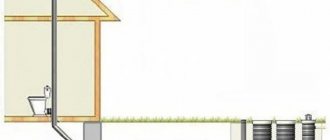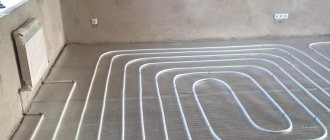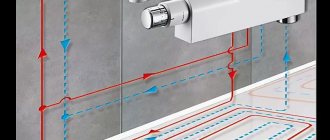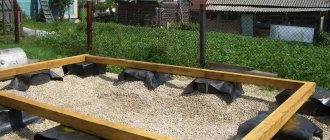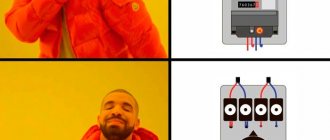Expert author of the article
Olga Ivanovna Avtushko
Leading civil engineer in a construction and installation organization. Work experience - 19 years.
Electricity distribution companies are forcing owners of private houses to install metering panels on the street. The electronic meter on the pole is a cause of disagreement and controversy. Each side pursues its own interests. It is important for suppliers that their energy is not stolen. Consumers are concerned about payments. Advanced technologies, compliance with laws and installation requirements solve the problem.
Which electric meter should I choose for outdoor installation?
There are household electricity meters designed for installation outside the home. They are able to withstand fluctuations in air temperature while maintaining accurate readings.
The devices are single- and multi-tariff, single- or three-phase.
Street meters come in different capacities.
To determine it, you need to calculate the total power of all electrical appliances in the room. If it is below 10 kW, then a 60 A meter is suitable, if more - 100 A. The accuracy class must be at least 2.0.
Devices are now being produced that work well even at low temperatures.
When purchasing an installation box, you need to pay special attention to its tightness. Heating is not required
The moisture-resistant box must have a degree of protection of at least IP53-IP54.
The box should be selected taking into account the design of the meter.
It is necessary to have a window on the door to take readings.
As an outdoor option, a single-phase electric meter is most suitable - for a small house and cottage, or a three-phase one - for a multi-storey cottage with a swimming pool, sauna, etc.
In the latter case, the main thing is to correctly connect the device and evenly distribute the load on the network circuits.
Electric meters have a higher accuracy class than induction meters. The readings remain stable despite temperature changes throughout the entire service life.
When selecting the type of device mounting, it is better to give preference to a DIN rail. It is universal.
Before purchasing, you need to pay attention to the seal and the date of the last verification. Its age should not exceed two years - for single-phase devices and 1 year - for three-phase
Rules for replacing an electric meter in a private house
Important! If the meter needs to be replaced, the following measures must be taken:
- First of all, you should obtain permission to replace the meter. To do this, you need to contact the company that supplies electricity. The application must include accurate information about the address of the house where the appliance needs to be replaced. The reason why the replacement must be made is also stated. After receiving the application, the company sends its specialist to inspect the device. Permission is given in writing. If the specialist makes a negative decision, then the reasons for such a decision must be indicated;
- After receiving permission, a meter is purchased. It is worth choosing a device in accordance with the recommendations given by the company supplying electricity;
- Next, the counter is installed. Installation can be carried out by any person who has access to electrical devices at least level 3. Electricians recommend inviting a company specialist. After the meter is installed, the person must be given a certificate signed by the person who installed the meter, as well as the seal of the organization that removed the old device.
Please note that independent dismantling without following the above procedure is not permitted. Replacing the device in this case may be punishable by penalties, according to which from the day the seal on the old device is removed until the date of elimination of the unauthorized dismantling of the meter, electricity consumption will be the product of the sum of the powers of all devices in the house and their operating hours
Replacing the device in this case may be punishable by penalties, according to which from the day the seal on the old device is removed until the date of elimination of the unauthorized dismantling of the meter, electricity consumption will be the product of the sum of the powers of all devices in the house by their operating hours.
After installing the device, it must be accepted for operation, that is, the authorized body must establish that the device is working properly.
To do this, the owner will have to:
- submit an application to the authorized body;
- attach data about the old meter;
- submit technical documents about the new meter;
- submit a document that identifies the applicant;
- attach a document confirming ownership of the residential property.
When the meter is accepted, the specialist will put a seal on it.
Timing for verification of electricity meters.
Installation procedure
You are allowed to install the meter yourself, but a representative of the resource supplier must connect the device. The work is performed in the following order:
- the input line is de-energized;
- A circuit breaker is installed in front of the device, and an electric meter is connected after it;
- to ensure safe operation of electrical equipment, grounding is installed;
- The home electrical wiring is connected to the output contacts of the product.
When carrying out work, the current regulations must be observed. When the device is mounted and connected, it is subject to sealing and registration.
After installation, a test run is carried out to check that the connection is working properly. Installation and connection are carried out in strict accordance with the requirements of safety regulations.
Who can connect
If at a general meeting (GM) the team made a positive decision to move meters, it is necessary that the work be carried out by qualified employees of the energy company.
Even if an outside electrician can perform the installation, certain authority is required to connect to the network and seal it. When the work is performed by a representative of the supplier, there will be no further claims against the consumer.
Meter transfer does not only involve technical processes. Representatives of the energy company must check the documents according to the boundary of division of balance sheet ownership, taking into account each device in the SNT.
Is it legal to install meters on a pole?
1. Produced, transmitted, consumed energy resources are subject to mandatory accounting using metering devices for energy resources used. The requirements of this article regarding the organization of accounting of energy resources used apply to facilities connected to electrical networks of centralized power supply, and (or) centralized heat supply systems, and (or) centralized water supply systems, and (or) centralized gas supply systems, and (or) other systems of centralized supply of energy resources. If other requirements for the installation sites of metering devices for used energy resources are not established by this Federal Law, other federal laws, other regulatory legal acts of the Russian Federation, compliance with the requirements of this article regarding the organization of metering of used energy resources in relation to facilities connected to centralized supply systems of the relevant energy resource, must ensure accounting of the energy resources used at the points of connection of the specified objects to such systems or in relation to objects used for the transfer of energy resources, at the points of connection of adjacent objects used for the transfer of energy resources and owned by right of ownership or other basis provided for by the legislation of the Russian Federation to different persons. Requirements for the characteristics of metering devices for energy resources used are determined in accordance with the legislation of the Russian Federation. The requirements of this article regarding the organization of accounting of energy resources used do not apply to dilapidated, emergency facilities, facilities subject to demolition or major repairs before January 1, 2013, as well as facilities whose power consumption of electrical energy is less than five kilowatts (in relation to the organization of accounting electrical energy used) or the maximum volume of natural gas consumption of which is less than two cubic meters per hour (in relation to the organization of metering of natural gas used).
In accordance with clause 144 of the Decree of the Government of the Russian Federation dated May 4, 2012 No. 442, metering devices must be installed at the boundaries of the balance sheet of electric power facilities (power receiving devices) of adjacent entities of the retail market - consumers, producers of electrical energy (power) in retail markets, network organizations with the general border of the balance sheet (hereinafter referred to as adjacent entities of the retail market), as well as in other places determined in accordance with this section in compliance with the requirements established by the legislation of the Russian Federation for the installation sites of metering devices.
The boundaries of balance sheet ownership are determined by the act of delimiting the balance sheet ownership of electric networks - a document drawn up in the process of technological connection of energy receiving devices of individuals and legal entities to electric networks.
The limits of responsibility of the parties for the operation of the relevant power receiving devices and power grid facilities are established by the act of delimiting the operational responsibilities of the parties, drawn up by the network organization and the consumer of electric energy transmission services in the process of technological connection of power receiving devices.
Is it possible to bypass
The theft of electricity causes damage to both the citizen and the state. Lovers of “freebies” hack into panels, install gadgets to stop the count, and are included in the circuit without permission. Attempts to cheat the meter lead to fires, power surges, and damage to household appliances.
The government has introduced amendments to the Code of Administrative Offenses of the Russian Federation. From 2021, a triple fine will be issued for repeated illegal tappings. For the first violation you will have to pay 10-15 thousand rubles. For a repeat – from 15 to 30 thousand rubles. A relapse is fraught with removal from office for 2-3 years. For legal entities the measures are stricter. Failure to pay fines may result in exclusion, a ban on traveling abroad, seizure of property, or court action.
The authorities hope that innovations will stop the mass outrages in the electricity sector.
Thanks to smart mechanisms, conscientious subscribers will not have to pay the bills of offenders. Responsibility will fall on the debtors. New models will help resolve disputes between suppliers and consumers. Useful article? Rate and share with friends!
Where should the meter be located on the street?
If you nevertheless decide to listen to the wishes of the energy supply organization or the administration of the gardening partnership and move the meter, remember that hanging it on the nearest pole will not work. There are special accommodation requirements that must be met.
So, you can install the meter in a special insulating panel on the facade of the building from the outside or on a special, free-standing support. It should be located at a height of 0.8 to 1.7 m from the ground so that the instrument readings are easily visible. In addition, you can hang the meter on a pole (light pole), but only if it is located on your property.
Remember that the requirement to place the meter off-site is illegal, since you will not be able to control the connections and condition of the device itself.
Is it worth giving up?
According to legal regulations, electricity meters are placed outside only with the consent of the owner. The basis for submission to the SNT may be a collective decision made at a general meeting.
Initially, many may perceive such an innovation critically, fearing for the safety of their property. But you also need to take into account the benefits that a change in the location of the device will provide. The controller will no longer bother you with monthly visits.
The indicator data will be sent to the settlement center on time, this eliminates the accrual of penalties and fines, and the occurrence of any misunderstandings. The device is reliably protected by a special shield against hacking and theft. For SNT members, such placement of the meter can also have significant advantages.
Moving meters outside in dacha cooperatives and gardening associations
You can often hear that the chairman of SNT began to demand that electricity meters be moved from houses to the street, citing the fact that this way it is possible to control electricity consumption and fight theft. However, out of the blue the chairman has no right to make such demands.
According to the Federal Law of April 15, 1998 No. 66-FZ, as amended. dated 07/03/2016 “On gardening, gardening and dacha non-profit associations of citizens”, all decisions of this kind are made only by the general meeting. That is, this topic must be put on the agenda in advance, discussed and voted on. If this does not happen, you can safely ignore the requirements. If your neighbors, for the most part, agreed to the demands, you will also have to comply.
Is it possible to refuse
ATTENTION! The energy company's requirement to move the meter outside violates the laws and regulations for the installation and operation of such devices.
Members of the partnership, faced with such intentions of the supplier, must write an official refusal to change the location of electricity meters. But perhaps such a solution will suit them better, in which case a meeting is held and a resolution is approved to move the devices to poles throughout the SNT.
Counters on poles: legality or lawlessness?
In the editorial mail, no, no, and there are letters about the installation of electricity meters by the energy supply company (in our case, KREK) on the street, on poles.
Residents of the private sector complain about complete confusion in this matter: and they allegedly count these meters incorrectly - there are discrepancies between the readings of home and street meters, and the readings themselves cannot be taken at a height of five to eight meters, and the energy supply company has not really made any agreements with people signs. However, power engineers convinced people that this was a necessary procedure, or even “decorated” the pillars on the sly.
How often it doesn't match
Why did they even come up with the idea of putting meters on poles? Power engineers argue: for unhindered access of their employees to the electric meter for inspection, testing and reading. But this, I think, is only half the truth, but in fact, the main thing in this matter is the fight of network operators against the theft of electricity.
Of course, if they steal, no one forbids power engineers to install control meters on the pole at their own expense and control the electricity consumption in the house, which is what happens in many cases.
My colleague lives in a private house. He says that a year ago they received a notice saying that on such and such a date at such and such a time they should be at home, since they would have an electric meter installed on a street pole.
One thing is good: they don’t demand money from people for installing them (at least I don’t know of such cases). Sort of free doubles.
People didn’t sign any contracts, and their home meter is still the calculated one, although its readings often do not coincide with the readings of the street meter - the numbers are not in favor of the owners.
Why is the meter lying?
Why is this happening? The fact is that the very fact of installing an electricity meter on the street is a gross violation of the PUE (rules for installing electrical appliances). These are the rules of electricians, and anything that does not meet these rules is illegal.
So, in paragraph 1.5.27 of Chapter 5 of these rules (PUE) it is clearly stated that meters must be installed in dry rooms, with a temperature range from 0°C to +40°C.
And if it stands outside, it will be constantly exposed to atmospheric phenomena: rain, snow, heat. They say that even a sealed shield is not able to protect the electrical equipment placed in it from heat, condensation and frost.
Yes, to be fair, let’s say that the same rules allow outdoor installation, but in heated cabinets. I very much doubt that anyone here will heat these cabinets.
My colleague says that so far they have no disagreements with the network companies: they pay according to their home meter, and the network company does not consider them debtors.
An old friend is better than a new one
However, there are cases when relations between energy workers and residents of the private sector “cease to be languid.” Thus, in August, the Kansk City Court considered a claim from Dmitry Isakov (name and surname changed) against JSC KrasEKo, the Kan branch of JSC KrasEKo and PJSC Krasnoyarskenergosbyt.
The essence of the story is this: Isakov was indignant that KrasEKo JSC unilaterally decided to replace his electric meter with a new one - the man did not write any statements, everything suited him. The plaintiff has several claims. For example, Isakov believes that the act was drawn up by the controller of the enterprise in gross violations of the law.
Namely: he, as a consumer, was not notified of the date and place of acceptance of the metering device, and the approval of the new meter for operation took place without his participation. In addition, Isakov considers the installation of the second meter on a support at a height of 8 meters to be inconsistent with the same PUE standards that we discussed above.
Dmitry also believes that the boundary of the balance sheet ownership of the parties should be at the entrance to the house, namely: on the street to the facade of the house (and not the support) - the area of responsibility of the network company, and from the facade of the house - its responsibility as the owner.
The plaintiff demanded that the act be declared illegal and that the old meter be used when paying for consumed electricity.
And now the most important thing. JSC KrasEKo voluntarily complied with the plaintiff’s demands, which in itself indicates that he was right, and the proceedings were discontinued.
It is possible and necessary to fight the “wants” of private owners, since the main task of any commercial structure is to make a profit.
What to do after the transfer
Installation of the device at a new place of operation is carried out by a representative of energy sales. But the owner of the site needs to ensure that the device is put into operation correctly and that all necessary documents are completed:
- In order for the meter to be put into operation, you need to submit an application to the energy company. It indicates the consumer’s passport details, his contacts, and the number of the contract with the supplier.
- A company representative will fill out the documents and indicate the arrival time of the specialist to install the seal. The first sealing should be free.
- After putting the meter into operation, you need to make sure that it is reliably protected by a special shield with a transparent window for reading readings.
How to properly install an electricity meter on the street: installation rules
You can call a specialist to install the electric meter.
If the owner of the house knows how to properly install the device, he can do it himself. To do this, you must follow safety precautions and act according to the scheme below.
Step 1. Application to the energy sales organization
The supplier prepares the necessary documents, an agreement, and assigns a personal account for payments for electricity. The supplier issues technical papers to the consumer.
They indicate:
- Counter type.
- Input protection circuit breaker.
- Wire cross-section and footage.
- Name of the installation panel (box).
Step 2. Installation of the meter
Having received the technical documents, you can install the device. When installing yourself, you should prepare the necessary materials and elements.
A YUR-NG (external distribution box) is fixed outside the house or on a pole. It is equipped with the necessary parts for fastening electrical. counter elements.
When installing the device yourself, you must follow certain rules:
- Before starting work, disconnect the network line.
- The installation height should be 0.8-1.7 m.
- At temperatures below 5°, the device readings are incorrect. You should consider purchasing a heated electrical panel.
- The input electrical circuit is connected to the line circuit breaker and then to the meter.
- Protective grounding is required. In case of phase imbalance or short circuit, the electronics in the house will not be damaged.
- The meter output is connected to the input machine.
- The meter must be located at a distance of at least a meter from the gas pipeline and water supply line.
- Test activation.
Step 3. Application for approval of the device for use
The document is drawn up by the consumer at the office of the energy sales company. It can be sent by registered mail with notification.
The application reflects the following information:
- Full name of the applicant.
- Agreement (account) number.
- Address and telephone number of the individual.
- Date and signature.
Step 4. Drawing up an inspection report and sealing the device
The document is prepared by the supplier's representative. It informs about the provision of the service for technological connection of the meter, its cost, technical characteristics of the connection, device data and initial readings.
Payments for electricity are made from the date specified in the act.
Important! When installing the electric meter for the first time, it is sealed free of charge.
Cable entry through a wooden house wall or foundation
If a self-supporting insulated wire or other conductor with aluminum conductors is laid from a pole to a wooden house, according to the PUE it cannot be introduced into the house: “laying cables with aluminum conductors over combustible structures is not allowed.” A switch to copper is needed. Most often, VVGng cable is used for this purpose - in non-flammable insulation.
It must be remembered that terminal boxes are used to connect these two conductors; ordinary twisting is unacceptable. Directly connected copper and aluminum enter into an active chemical reaction, quickly and strongly oxidize, which worsens the contact. As a result, even with minor loads, a spark appears at the connection point, and this is a direct path to a fire. Therefore, the use of terminal boxes is mandatory. They are available in a sealed case, and some are open. For outdoor use, of course, sealed ones are better; you can also install open ones in the house.
How to connect copper and aluminum wire
But that's not all. The power cable can only be routed through a wooden wall through a thick-walled steel pipe. The diameter of the pipe must be at least 4 times the outer diameter of the wire. The wall thickness is standardized (SP 31-110-2003) and must be no less than:
- 2.8 mm for a cable with a core cross-section of 4 sq. mm
- 3.2 mm for cables with conductors 6-10 sq. mm.
It is advisable to position the entrance with a reverse slope so that water does not flow inside. To seal entry and exit points, as well as to ensure electrical safety, you can use asbestos, rubber or plastic plugs. The edges of the pipe will need to be carefully processed and sanded until completely smooth so that the cable does not fray and its sheath is not damaged.
Entering an electrical cable through a wooden wall of a house
To calm down and increase reliability, the section that will be inside the pipe can be wrapped with asbestos thread or other insulating material. It can also fill the space inside the pipe to prevent insects from settling there. Another option is to fill the pipe with cement or alabaster mortar.
When entering through the foundation, the situation is slightly different: the structure is no longer considered combustible, so plastic embeds can be used. They are installed at the stage of manufacturing the strip foundation. In this case, the passage for the cable differs depending on whether the cable enters a wet or dry room.
Entering an electrical cable through the foundation of a house
The spare parts necessary for organizing the safe entry of electricians into the house do not cost very much, but significantly increase the reliability, electrical and fire safety of your home. The designs are quite simple; you can handle their construction with your own hands.
Types of circuit breakers
Electricity meter machines are distinguished according to several criteria:
- by the type of current in the main circuit;
- mechanical or motor control;
- installation method: the machines can be pulled out, be stationary or stuck into the wall;
- by type of release: they are magnetic, electronic, thermal and other types;
- body: may consist of separate parts or be solid, open or closed;
- the amount of current passed;
- the ability to disconnect the electrical circuit from a distance;
- protection that is triggered at critical voltage levels.
The sizes of machines for electricity meters can be different: designed to protect electrical networks in residential premises or large industrial buildings. Switches made in Russia and foreign made are installed in apartments.
Switches are divided into:
- differential;
- automatic;
- residual current devices. They protect against electric shock and prevent fire when electrical cables are damaged.
Connection diagram
The height at which the meter box should be installed should be in the range from 80 to 170 centimeters. According to the rules for installing an electricity meter in a private house, the device is located vertically, with a deviation not exceeding one degree.
There must be a switch in front of the meter that performs protective functions. Protective grounding must be provided. It can not only save you from a lightning strike, but also protect all electrical appliances in the house in case of a short circuit.
According to the diagram, the phase and neutral lines are input. Similar outputs are available. A panel with automatic switches is connected to them, which represents the wiring for a private house. The installed electric meter must have an inspection date with a period that has not yet expired.
When frost exceeds 5 degrees, the readings of the meter may be inaccurate. The error can reach 10%. To increase the accuracy of measurements, a heating device is installed inside the shield.
If the meter is installed during the construction of a private house or cottage, it will be useful to install sockets that will provide electricity to the devices used during the construction process.
It is not necessary to install an electricity meter outside
The chairman of our dacha cooperative demands that the electricity meter be removed from the house and installed on a street pole. This allegedly makes it more convenient for him to check electricity consumption indicators and control unauthorized selection. Is this requirement legal?
The rules for the use of electrical energy for the population, approved by Resolution of the Cabinet of Ministers of Ukraine dated July 26, 1999 No. 1357 (hereinafter referred to as the Rules), do not establish such an obligation. Clause 21 of the Rules determines that meter readings are taken by the consumer, and the energy supplier has the right to control the correctness of meter readings and the execution of payment documents by the consumer. The energy supplier also has the right to independently take readings from the consumer’s metering devices. At the same time, the energy supplier can check the serviceability of metering devices and take readings only in the manner specified in the contract for the supply of electricity (clause 37 of the Rules).
The optionality of installing a meter on the street (or in another place of free access) is evidenced by the fact that the Rules provide for the possibility of installing meters, for example, in apartments, and also by the fact that if there is no access to the meter, a representative of the energy supplier must issue a payment document based on data on actual electricity consumption for the previous period (clause 30 of the Rules).
By the way, it should be noted that according to the Rules, an energy supplier is a participant in the wholesale electricity market of Ukraine, purchasing electricity on this market for the purpose of selling it to consumers, and therefore no garden cooperative can be considered an energy supplier. Accordingly, all the powers of the energy supplier indicated above do not apply to garden cooperatives.
Thus, providing the chairman of the cooperative (or another person) with information about consumed electricity and paying for its consumption through them is a voluntary matter for each member of the cooperative.
In addition, the procedure for installing electricity meters presupposes certain technical conditions. According to clause 10 of the Rules, metering devices must be installed in accordance with the requirements of the rules for the arrangement of electrical installations
The energy supply companies themselves also focus on this in their recommendations on installing meters outside the place of direct consumption of electricity.
Please note that not a single energy supply company has developed a single mandatory act (but only recommendations) on the installation of meters in places where controllers have free access (in particular, on street poles). Thus, according to paragraph
1.5.27 of the Rules for the Arrangement of Electrical Installations, meters must be placed in dry rooms that are easily accessible for maintenance (note - not on the street), in a place sufficiently free for work with a temperature in winter not lower than 00 C. The rules allow the meters to be placed in unheated rooms and corridors , cabinets for external installation (read - on the street), but on the condition that their stationary insulation for the winter period will be provided (insulated cabinets, hoods with heated air inside to ensure positive temperatures, but not higher than +200 C). It is not easy to comply with these restrictions in garden cooperatives. By the way, according to experts, an induction electric meter at negative temperatures inevitably begins, simply put, to “lie.” Moreover, “lying” is not in favor of the subscriber, so the energy company is of little concern about this circumstance, but for the subscriber this is a significant disadvantage
Thus, according to paragraph
1.5.27 of the Rules for the Arrangement of Electrical Installations, meters must be placed in dry rooms that are easily accessible for maintenance (note - not on the street), in a place sufficiently free for work with a temperature in winter not lower than 00 C. The rules allow the meters to be placed in unheated rooms and corridors , cabinets for external installation (read - on the street), but on the condition that their stationary insulation for the winter period will be provided (insulated cabinets, hoods with heated air inside to ensure positive temperatures, but not higher than +200 C)
It is not easy to comply with these restrictions in garden cooperatives. By the way, according to experts, an induction electric meter at negative temperatures inevitably begins, simply put, to “lie.” Moreover, “lying” is not in favor of the subscriber, so the energy company is of little concern about this circumstance, but for the subscriber this is a significant disadvantage.
Types of automated devices and electricity metering systems
Electric meter with remote control
When considering this issue, it is possible to find out which types of meters are installed on poles and which are not, and also become familiar with the existing types of devices. One of the options for such devices is an electric meter on a pole with a remote control that allows you to control operating modes, take readings and display them on the built-in display. The range of remote communication is very small and amounts to no more than ten meters.
Another version of this device involves transmitting information to the control panel directly via the power cable (not via the Internet). This method can also be used when installing an electric meter inside an apartment or private house. Some samples of devices for remote readings provide the option of “transferring” information over a radio channel operating over considerable distances. If it needs to be transmitted over short distances, standard infrared communication lines (IRDA) are used.
In addition to the shield components, you must:
How I installed the metering board on a support
- Input cable brand SIP-4 4x16 for connecting the shield to the line at the top of the support
- Usually the height of the support is 5-7 meters, but it is better to measure it in advance and take wires with a reserve
- Kit for running cables along supports. According to the specifications, the cable must be raised from the shield to the top of the support. This must be done in a corrugation or cable channel spaced 10 cm from the support. This is done so that if a local electrician suddenly wants to climb onto the support with the help of his claws, he would not damage the cable with them. I did this using M6 studs and pieces of din rail. PVC pipes and plumbing clamps
- Cable brand SIP-4 4x16 for creating a line from the ASU to the input into the house
- Set of piercing clamps and hangers for SIP
- A piece of metal corner 50x50 mm about 2 meters to create a re-grounding conductor, because I did not find a grounding loop on my support, and the shield must be grounded
Basic criteria for choosing a box
The main task of the consumer is to find a durable, practical box that will withstand long-term service in outdoor conditions. The box should be convenient for installation and operation.
What is important about the design itself? The presence of holes of the appropriate diameter for the wires that come from the support and lead out to the building. It is desirable that these elements have rubber seals and plastic couplings.
The electrical panel must accommodate all necessary outgoing cables and additionally leave space for upgrading or expanding the installation
A convenient detail is the window. It eliminates the need to open the shield to take readings and reduces the frequency of contact of the internal contents with air and moisture. Pay attention to the sealing lugs.
Another important point is the degree of protection from dust and humidity. It is determined by the IP index and the number next to it
The IP20 index means that the box is protected from dust particles larger than 12.5 mm, but is vulnerable to moisture. The IP65 protection degree guarantees complete isolation from these negative factors. The higher the number, the more expensive the design. The optimal option is with a score of 54.
When choosing an electrical panel, you also need to look at the thickness of its walls, operating temperature range, number of doors, and type of lock. The box can be locked with one individual key or equipped with several identical ones.
conclusions
- If there is a desire and a strong recommendation from the selling organization to “install a meter outside the house,” it is placed in the input device cabinet and taken out of the site.
- The input device cabinet is re-grounded.
- A switching device or fuses are installed before the metering meter.
- After the metering meter, circuit breakers are installed, which are called input circuit breakers;
- As additional protection, SPDs are installed in the water shield installed on the support;
- The VU cabinet with a metering unit must have a window for reading meter readings, and the cabinet door must be locked and sealed.
Sources
- https://RozetkaOnline.ru/podkljuchenie-i-ustanovka/item/219-sborka-shchita-ucheta-380v-s-protivopozharnym-uzo-dlya-chastnogo-doma-sistema-zazemleniya-tn-cs
- https://samelectrik.ru/kak-ustanovit-shhit-ucheta-na-opore.html
- https://profelektrika.ru/uslugi/montazh-avtomatiki/na-stolbakh.html
- https://sovet-ingenera.com/elektrika/schetchiki/ulichnyj-yashhik-dlya-elektroschetchika.html
- https://Proekt-sam.ru/proektsistem/ustanovka-sshetchika-elektroenergii-na-stolb-lep.html
- https://electric-stupino.ru/%D1%83%D1%81%D1%82%D0%B0%D0%BD%D0%BE%D0%B2%D0%BA%D0%B0-%D1% 81%D1%87%D0%B5%D1%82%D1%87%D0%B8%D0%BA%D0%B0-%D0%BD%D0%B0-%D1%81%D1%82%D0% BE%D0%BB%D0%B1%D0%B5/
- https://ehto.ru/elektrika-chastnogo-doma/elektrika-derevyannogo-doma/ustanovka-vvodnogo-shhita-na-opore
[collapse]


